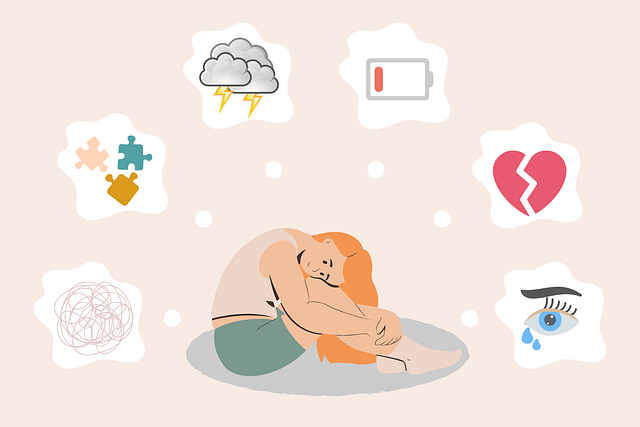Introduction to the Psychology of Dreams
Dreams have fascinated humanity for centuries. From ancient civilizations interpreting dreams as messages from gods to modern scientists studying the brain’s activity during sleep, dreams remain a mysterious yet vital part of human psychology. The psychology of dreams explores why we dream, what our dreams mean, and how they influence emotions, memory, and mental health.

This article will provide a comprehensive overview of dreams, including theories from Freud and Jung, modern scientific perspectives, cultural interpretations, and practical examples. By the end, you will understand not only how dreams work but also why they matter in shaping our daily lives.
Why Do Humans Dream?
Dreams occur during the rapid eye movement (REM) stage of sleep, where brain activity is high, and vivid imagery is most common. Psychologists and neuroscientists suggest several reasons why humans dream:
- Memory consolidation: Dreams may help the brain process and organize daily experiences.
- Emotional regulation: Dreams can provide a safe space to explore fears and desires.
- Problem-solving: Creative solutions often appear in dreams.
- Random neural firing: Some scientists argue dreams are simply the brain’s way of interpreting random signals.
While no single theory explains dreams fully, most agree that they play a crucial role in mental and emotional well-being.
Historical Views on Dreams
Throughout history, dreams have been considered powerful and symbolic:
- Ancient Egypt: Dreams were seen as messages from gods and used for prophecy.
- Greek philosophy: Aristotle viewed dreams as reflections of bodily processes, while Plato saw them as a window into the soul.
- Middle Ages: Dreams were interpreted through a spiritual or religious lens.
These historical views paved the way for modern psychology, where dreams are now studied scientifically as well as symbolically.
Freud’s Theory of Dreams and the Unconscious Mind
Sigmund Freud, the father of psychoanalysis, believed dreams were the “royal road to the unconscious.” His theory suggested:
- Manifest content: The surface storyline of the dream.
- Latent content: The hidden psychological meaning behind the dream.
For example, dreaming of flying might symbolize freedom, while forgetting to attend an exam could represent anxiety about failure.
Freud argued that dreams allow repressed desires and unresolved conflicts to surface. While many modern scientists criticize his ideas as untestable, Freud’s theory remains foundational in dream psychology.
Jung’s Theory of Dreams and Archetypes
Carl Jung, a student of Freud who developed his own theories, viewed dreams differently. He believed they reflected not only personal unconscious thoughts but also the collective unconscious shared by all humans.

Key aspects of Jung’s theory include:
- Archetypes: Universal symbols such as the hero, the shadow, or the mother figure that appear in dreams.
- Compensation: Dreams balance conscious attitudes by showing hidden truths.
- Self-discovery: Dreams guide personal growth and understanding.
For instance, a dream about being lost in a forest might symbolize facing one’s inner fears or exploring unknown aspects of the self.
Modern Theories of Dreaming
Beyond Freud and Jung, modern psychology offers several theories:
- Activation-synthesis theory: Dreams are the brain’s attempt to make sense of random neural activity during REM sleep.
- Information-processing theory: Dreams help consolidate and organize information from daily experiences.
- Emotional regulation theory: Dreams process emotions, reducing stress and anxiety.
These theories emphasize the biological and cognitive functions of dreaming, making dreams essential for brain health.
What Does Science Say About Dreams?
Scientific studies using brain imaging have shown that dreams involve:
- The limbic system: Responsible for emotions.
- The prefrontal cortex: Less active during dreams, explaining illogical or surreal elements.
- Neurotransmitters: Such as serotonin and dopamine, which influence dream vividness and mood.
Science confirms that dreams are not random but deeply tied to brain function, memory, and emotion.
The Role of the Brain in Dream Formation
Dreams are produced when different parts of the brain interact during sleep. The pons, a brainstem structure, triggers REM sleep, while the amygdala activates emotional content. Meanwhile, the hippocampus organizes memory fragments into dream narratives.
This explains why dreams often combine familiar people, places, and feelings in strange ways.
Common Themes and Symbols in Dreams
Dreams often contain recurring themes that reflect shared human experiences:
- Falling: Linked to insecurity or loss of control.
- Being chased: Represents avoidance of problems.
- Flying: A sense of freedom or escape.
- Exams or tests: Anxiety about performance.
- Teeth falling out: Fears of aging, appearance, or vulnerability.
While interpretations vary, these common symbols reveal how deeply personal concerns manifest in dream imagery.
What Do Nightmares Reveal About Mental Health?
Nightmares, though unpleasant, provide valuable psychological insight. They often:
- Reflect unresolved trauma.
- Reveal stress and anxiety.
- Signal deeper emotional struggles.
For example, recurring nightmares after a stressful event may point to post-traumatic stress disorder (PTSD). Therapists sometimes use dream analysis to uncover hidden fears and begin healing.
Lucid Dreaming: Psychology and Possibilities
A lucid dream occurs when a dreamer becomes aware they are dreaming and may even control the dream. Psychologists study lucid dreaming because it offers:
- Opportunities for creative problem-solving.
- A chance to confront fears in a safe environment.
- Insight into self-awareness and consciousness.
Techniques like reality checks and dream journaling can increase the likelihood of lucid dreams.
Cultural Perspectives on Dreams
Dream interpretations vary across cultures:
- Chinese traditions: Dreams often symbolize harmony or imbalance in life.
- Native American cultures: Dreams connect individuals to spiritual guides.
- Islamic traditions: Dreams can be classified as true visions, personal reflections, or distractions.
These perspectives show that dreams are not just personal experiences but also shaped by culture and belief systems.
Real-Life Examples of Dreams Influencing Decisions
History offers fascinating examples of dreams guiding human progress:
- Elias Howe, inventor of the sewing machine, credited a dream for solving a design problem.
- Mary Shelley dreamed of a creature that inspired her novel Frankenstein.
- Mendeleev dreamed of the periodic table’s structure before finalizing his groundbreaking work.
These examples reveal how dreams can inspire creativity and innovation.
How to Analyze Your Own Dreams
Analyzing dreams helps uncover unconscious thoughts and emotions. Here are practical steps:
- Keep a dream journal: Write down dreams immediately upon waking.
- Look for patterns: Identify recurring themes or symbols.
- Connect with daily life: Ask what events or emotions may have influenced the dream.
- Consider emotions: Focus on how the dream made you feel.
- Use guided reflection: Meditation or therapy can deepen understanding.
Dream analysis can lead to self-awareness and personal growth.
The Future of Dream Research
Modern science continues to explore dreams using technologies like neuroimaging and artificial intelligence. Future research may reveal:
- How dreams influence creativity.
- Whether we can intentionally control dream content.
- Links between dreams and early detection of mental health disorders.
The intersection of psychology and neuroscience promises deeper insights into this mysterious phenomenon.
Conclusion: Why Understanding Dreams Matters
Dreams are more than random images—they are a vital window into the human mind. From Freud’s and Jung’s classic theories to modern neuroscience, dreams reveal how emotions, memories, and unconscious thoughts shape our lives.
By studying dreams, we can:
- Understand hidden emotions.
- Improve mental health.
- Enhance creativity and problem-solving.
- Strengthen self-awareness.
Ultimately, the psychology of dreams shows that what happens during sleep is not wasted time but an essential part of who we are. Exploring this inner world helps us connect more deeply with ourselves and the mysteries of the human mind.



